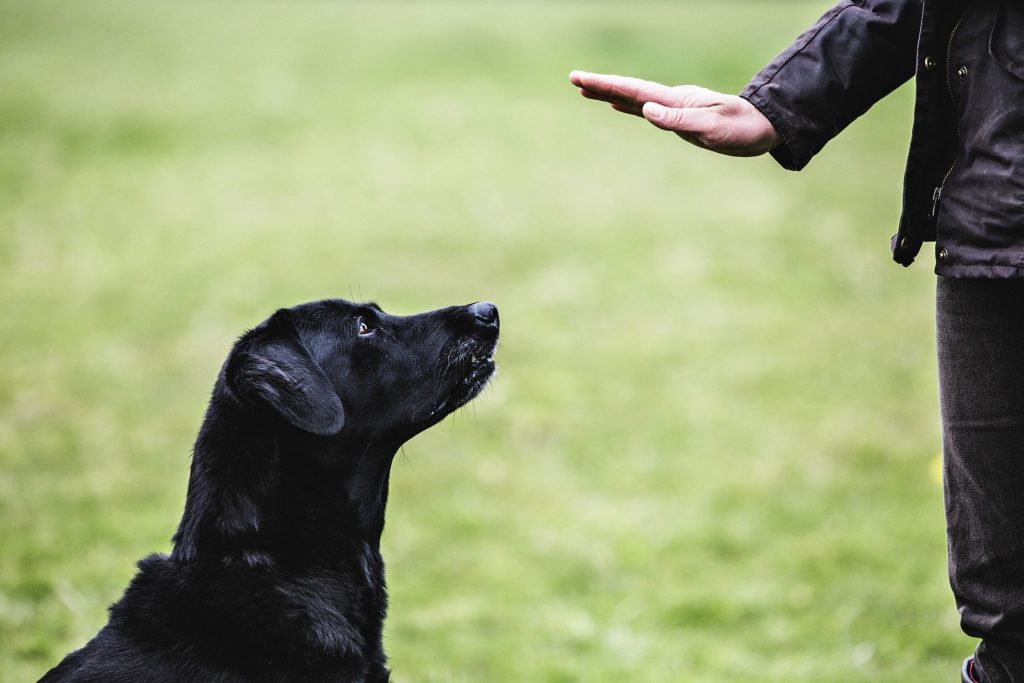Puppy Education: The Importance of Training Signals and Basic Commands from an Early Age

The Importance of Training in Early Puppy Development
The early stages of a puppy’s life represent a pivotal period in shaping their future behavior and temperament. In these formative weeks, puppy owners have a unique opportunity to instill essential skills that will define their dog’s personality and relationship with humans. Training signals and basic commands play an indispensable role in this process, serving not only as a means of communication but also as a pathway to building a trusting and harmonious relationship.
One of the first aspects to consider in puppy education is socialization. This involves exposing your puppy to a variety of people, environments, and other animals. For example, taking your puppy to a local park where they can meet children, other dogs, and even different types of people, can significantly enhance their social skills. The American Kennel Club emphasizes the importance of socialization as it helps reduce fears and anxiety in adult dogs, leading to a confident and well-adjusted pet.
Another foundational element of puppy training is command recognition. Teaching basic commands like “sit,” “stay,” and “come” is crucial. These commands facilitate safe interactions and allow for smoother control in various situations. For example, when you call your dog to “come,” it can prevent them from running into dangerous situations, like oncoming traffic. Utilizing a command-training method, such as clicker training, can provide an engaging way for your puppy to learn these vital commands.
Positive reinforcement is another essential strategy worth emphasizing. This approach involves rewarding your puppy with treats, praise, or playtime whenever they successfully follow a command or exhibit desired behavior. This method not only makes the training experience enjoyable for your puppy but also fosters a bond built on trust and understanding. For instance, when your puppy sits on command and you reward them with a treat, they begin to associate the action with positive outcomes, thereby reinforcing the behavior.
Moreover, consistency is key in establishing an effective training routine. Dogs thrive on predictability, so using the same commands and rewarding them in the same manner each time helps reinforce their learning. Consider implementing a daily training schedule, dedicating a short amount of time each day to practice commands and socialize your puppy. This effort not only aids in building their skill set but also strengthens the trust between you and your pet, which is vital for a long-lasting relationship.

The significance of early training cannot be overstated. Research shows that well-trained dogs tend to exhibit better behavior, leading to a healthier relationship between pet and owner. Moreover, such training can greatly reduce common behavioral issues and make them a joy to have around. By investing time and effort into your puppy’s education, you are laying the groundwork for a fulfilled and joyful partnership.
As you navigate this rewarding journey of puppy training, remember that each command learned and each social experience embraced adds layers to your dog’s understanding of the world. By prioritizing these facets, you not only contribute to your puppy’s personal development but also cultivate a life filled with happiness and companionship together.
DIVE DEEPER: Click here to discover the significance of a balanced diet for your pets
Understanding the Building Blocks of Puppy Training
Training your puppy is more than just teaching them how to follow commands; it’s about laying a strong foundation for their behavior and well-being throughout their life. One of the critical components of this process is understanding the importance of training signals. These signals are the cues you use, both verbal and non-verbal, to communicate with your dog. Establishing clear signals from an early age helps your puppy understand what you expect from them, thus alleviating confusion and frustration on both sides.
Training puppies requires a mixture of commands, consistency, and engaging techniques. Let’s delve into the essential commands that form the core of puppy education:
- Sit: This is often the first command puppies learn, teaching them to settle down and pay attention.
- Stay: This command is crucial for keeping your dog safe in potentially dangerous situations, allowing you to maintain control.
- Come: Encouraging your dog to return to you is vital for off-leash activities and is essential for their safety.
- Leave it: This command teaches your puppy to ignore distracting or dangerous objects, which is vital for their safety and wellbeing.
- Down: Encouraging your puppy to lie down can promote calmness and is also useful in high-energy situations.
Once you’ve introduced these basic commands, integrating training signals will further enhance their learning experience. For instance, using hand signals in conjunction with verbal commands can improve comprehension and recall. Research indicates that dogs are particularly responsive to visual cues, making it easier for them to associate a specific hand gesture with the corresponding command.
Another essential factor in effective puppy education is creating an environment conducive to learning. Puppies have short attention spans, so it’s beneficial to keep training sessions brief yet frequent. Aim for sessions lasting around 5 to 10 minutes, spread throughout the day, which allows your puppy to absorb the training without becoming overwhelmed.
Moreover, the adoption of methods such as clicker training can transform the way your puppy interacts with commands. This technique utilizes a small handheld device that makes a clicking sound, signaling to your puppy that they’ve performed a task correctly. The sound then gets followed by a treat, reinforcing the desired behavior. This method not only enhances the learning process but also develops a stronger bond through positive interactions.
Finally, patience is crucial when training your puppy. It’s important to remember that every dog learns at their own pace. Celebrating small achievements during training boosts your puppy’s confidence and motivates them to learn further. By ensuring an understanding of basic commands and the associated signals, you’re building a solid foundation that can make a world of difference in your puppy’s behavior and your relationship as they grow.
| Advantage | Explanation |
|---|---|
| Enhanced Communication | Training signals create a shared language between you and your puppy, facilitating smoother interactions. |
| Safety | Basic commands like “sit” and “stay” are crucial for keeping your puppy safe in potentially dangerous situations, ensuring they respond promptly and appropriately. |
| Socialization | Training early provides your puppy with exposure to various environments and people, promoting positive interactions and reducing anxiety. |
| Behavioral Issues Prevention | Early training helps address behavioral challenges before they escalate, ensuring a well-adjusted adult dog. |
Training signals and commands not only foster a strong bond between you and your puppy, but they also pave the way for a lifetime of good behavior and happy experiences. Engaging in early education sets the foundation necessary for a harmonious household where both you and your furry friend can thrive together. Understanding the critical advantages of training can inspire dog owners to invest time and effort into developing their puppy’s skills, ultimately leading to rewarding outcomes. Embrace the journey of puppy education, and watch as your little companion blossoms into a beloved family member.
LEARN MORE: Click here to discover effective strategies
The Role of Socialization in Puppy Training
While establishing basic commands is crucial for effective puppy education, equally important is the practice of socialization. Socialization refers to the process of exposing your puppy to a variety of environments, people, animals, and experiences. Doing this from an early age can significantly influence their behavior as adults, reducing the likelihood of developing behavioral issues such as fear, aggression, or anxiety.
Socializing your puppy is best initiated within the critical period of development, typically between 3 to 14 weeks of age. During this time, puppies are most receptive to new experiences. Introducing your puppy to different situations—such as busy streets, various sounds, and other dogs—fosters adaptability and resilience. It’s important to make these experiences positive. For instance, letting your puppy explore a park or meet friendly dogs while providing plenty of praise and treats helps them associate these environments with positivity. This reinforces their confidence and comfort in various situations.
Moreover, incorporating training signals into socialization can lead to significant benefits. Using commands such as “sit” or “stay” when meeting other dogs can promote good behavior during these encounters. Training your puppy to follow commands in diverse settings also improves their attention span and enhances their learning process. This is particularly vital in social situations where distractions abound.
Consider enrolling your puppy in a structured socialization class, which often combines training with interaction. These classes generally provide a safe space for puppies to learn essential skills while socializing with other pups under professional guidance. They can expose your puppy to various stimuli, gradually building their confidence in handling the world around them.
The Importance of Positive Reinforcement
In the realm of effective puppy education, the principle of positive reinforcement cannot be overstated. This method involves rewarding your puppy for displaying desirable behavior, which can lead to faster learning and better retention of commands. Rather than focusing on punishment for undesirable actions, positive reinforcement encourages a trusting and loving bond between you and your puppy.
Using treats, praise, or toys to reward your puppy when they respond correctly to a command or exhibit good behavior will reinforce their learning. For example, if your puppy sits when you ask them to, giving them a treat along with enthusiastic praise teaches them that complying with commands is advantageous. Over time, they will be more likely to repeat those actions, knowing that such behaviors yield positive outcomes.
Furthermore, maintaining consistency in your commands and expectations is essential for your puppy’s understanding. Using the same words and signals for commands every time helps reduce confusion, guiding your puppy to learn quickly. Additionally, engaging in a positive manner, even during correction, will nurture a supportive environment that fosters ongoing learning.
It is also beneficial to incorporate variety in training approaches. Whether using toys, interactive games, or outdoor training sessions, making education enjoyable keeps your puppy engaged and eager to participate. This enthusiasm can translate into a strong motivation for your puppy to learn new commands and social behaviors, leading to a more fulfilling relationship.
As you can see, the incorporation of socialization, positive reinforcement, and consistent training signals into your puppy’s education creates a more holistic approach to training. This thoughtful method equips your puppy with essential skills for adapting to the world around them while deepening the bond between you both. An early investment in this foundation provides long-lasting benefits that result in a well-behaved, sociable, and resilient adult dog.
LEARN MORE: Click here for essential pet health tips
Conclusion
In conclusion, puppy education is a vital aspect of nurturing a well-adjusted and happy canine companion. Incorporating training signals and basic commands from an early age fosters a strong foundation for your puppy’s behavioral development. By engaging in training and socialization during their formative weeks, you not only teach your puppy essential skills but also prepare them for the complexities of adult life. The early exposure to various environments, people, and other animals further enhances their adaptability and confidence, allowing them to thrive in diverse situations.
Furthermore, employing positive reinforcement as a core principle enriches the training experience, promoting a loving bond that encourages eager learning. This supportive atmosphere cultivates not only compliance but also a sense of security for the puppy. As a pet owner, maintaining consistency in commands and incorporating enjoyable training activities will keep your puppy engaged, making learning fun and dynamic.
Ultimately, investing in your puppy’s education through commanding training signals, socialization practices, and positive reinforcement leads to profound long-term benefits. This thoughtful approach minimizes behavioral issues and nurtures a well-balanced adult dog who is capable of forging meaningful connections with both humans and other canine companions. As you embark on your journey of puppy education, remember that the early days are not just foundational; they are transformative, setting the stage for a lifelong partnership enriched with joy and understanding.



